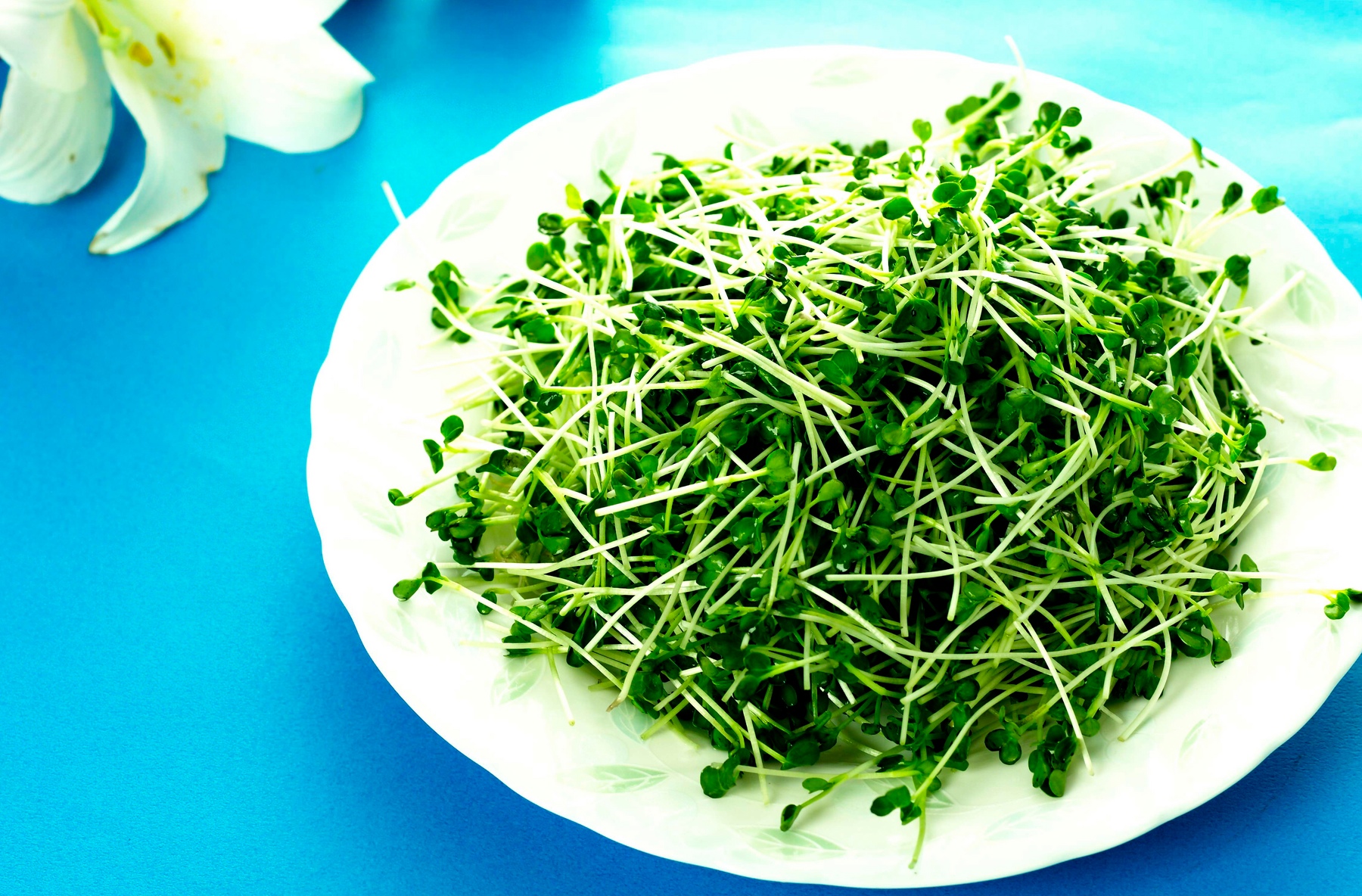By Lauren Scott, Arizona Farm Bureau Intern
Have you ever heard of Microgreens? Well, they are the shoots of salad vegetables that are harvested right after the first leaves develop. Think arugula, broccoli, chard, mustard, and kale, among the many other varieties. The seeds of these different plants are planted in soil, and grown for at least a week before they are harvested. Some microgreens even take up to two weeks to grow to harvest size.

Now, microgreens should not be confused with sprouts. Anywhere you can get sprouts you will see warnings that they may make you sick when consumed raw or lightly cooked. This is because of the warm, humid environment they are grown in. Sprouts are grown right in water, with no soil involved, which creates a much more hazardous environment that can breed things like E. coli and Salmonella. With microgreens, however, they are grown in a much more temperature and humidity controlled environment.
Like I said before, there are many different kinds of vegetable shoots grown for the purpose of being microgreens. There are ones like arugula, chard and kale, which when grown into mature plants are also consumed, and there are some stranger ones like mustard, sunflower, wheatgrass, and kohlrabi. These last three plants can be consumed as adults, but they are much less common that the aforementioned veggies.
So if plants used for microgreens are also eaten as adult plants, what’s the point of harvesting them so young? Well I’m glad you asked! These tiny plants hold the key to nutrients! They are jam packed with more Vitamin K, Vitamin C, Vitamin E, and beta-carotene then their adult counterparts. When the microgreens are harvested, they are at a point in their growth where they are packed with all the nutrients they need to grow into big plants, which means when we add them as an ingredient in our dishes, we get all that nutrients they had stored up! Also because they are so small, not only are the nutrients concentrated, but the delicious flavor is concentrated too, so a little goes a long way.
We don’t have any recipes including microgreens on Fill Your Plate yet, but we would love to add yours to our collection of tasty recipes! Let us know what you like to use your microgreens for!


One Response to What do you know about Microgreens?